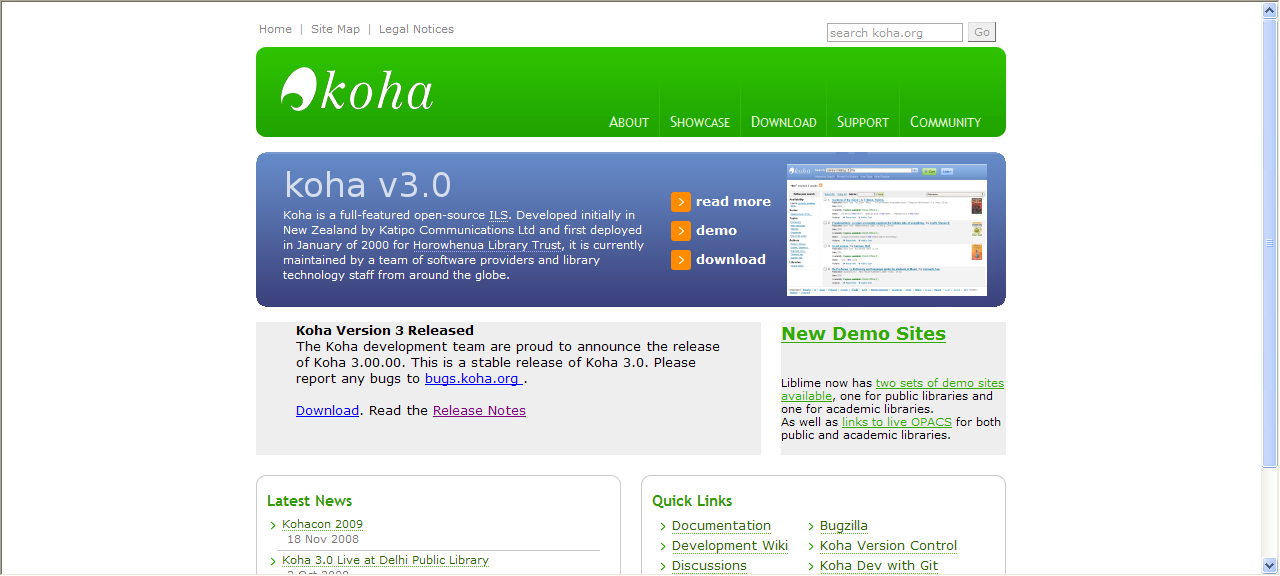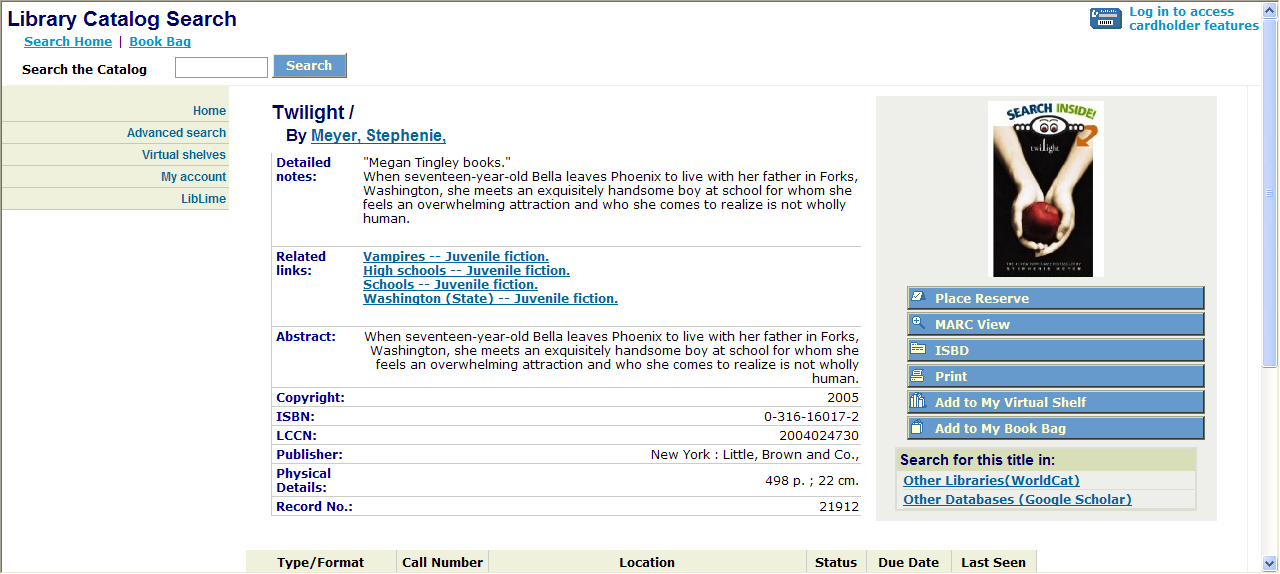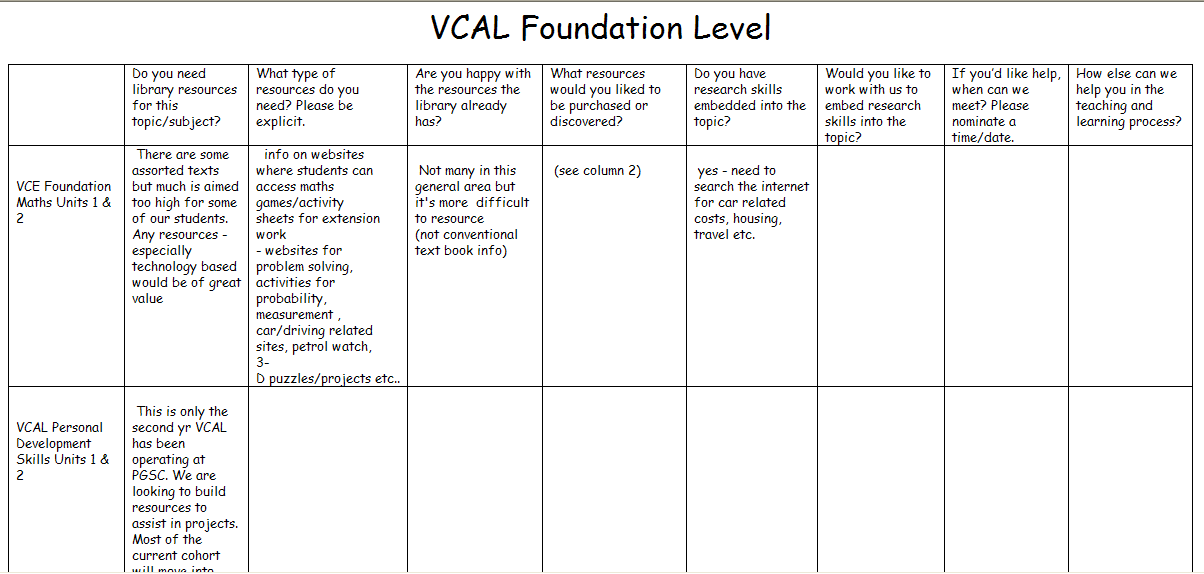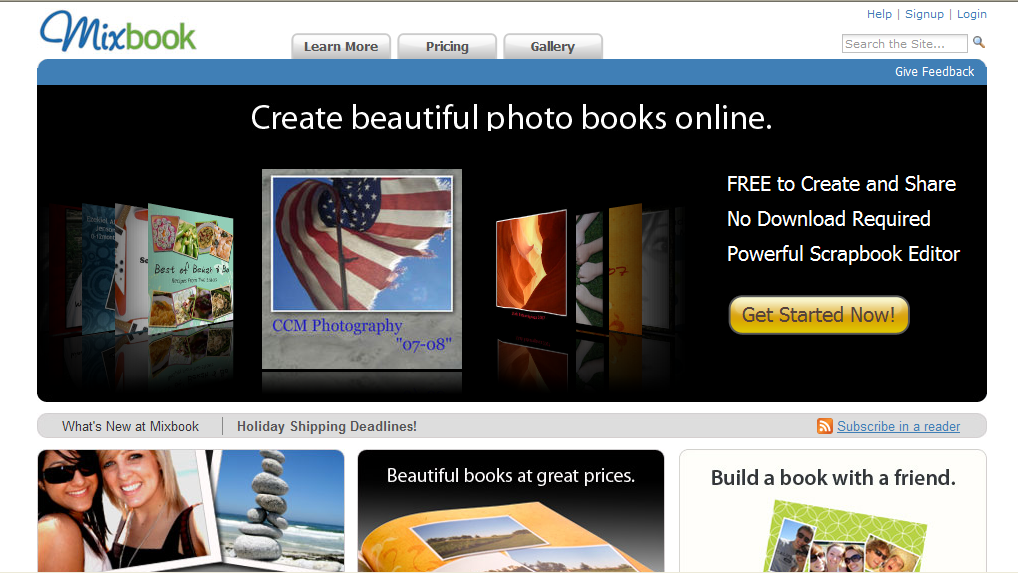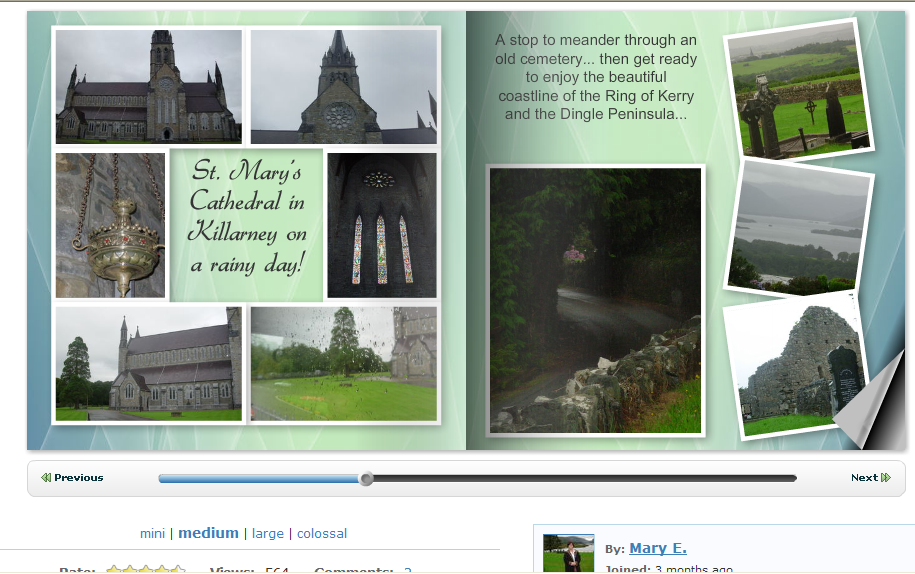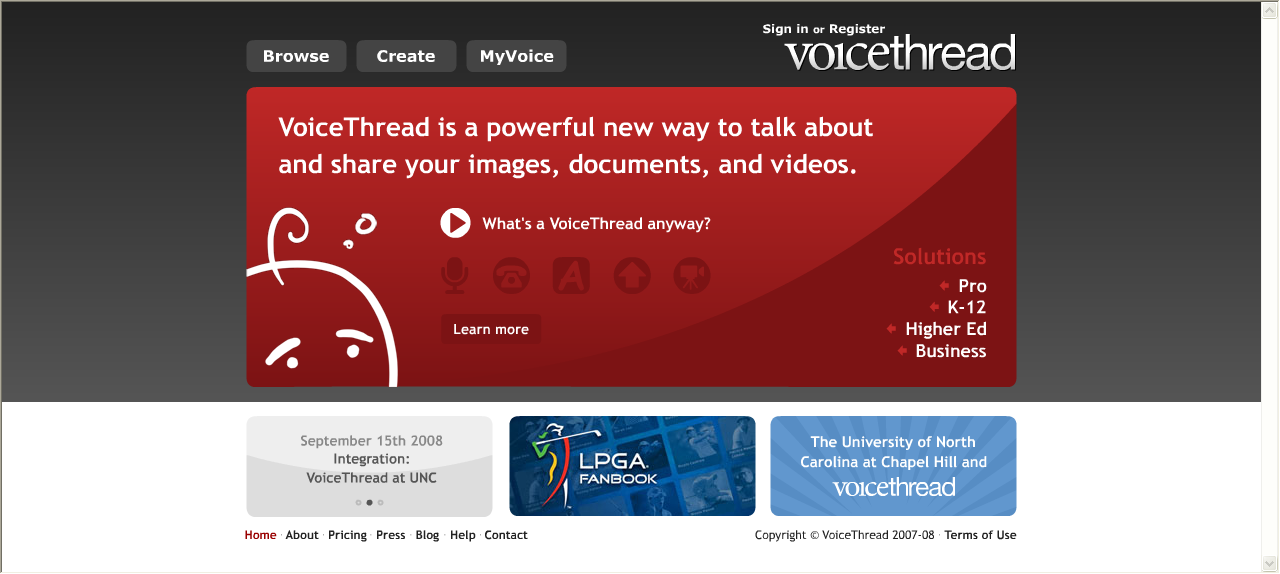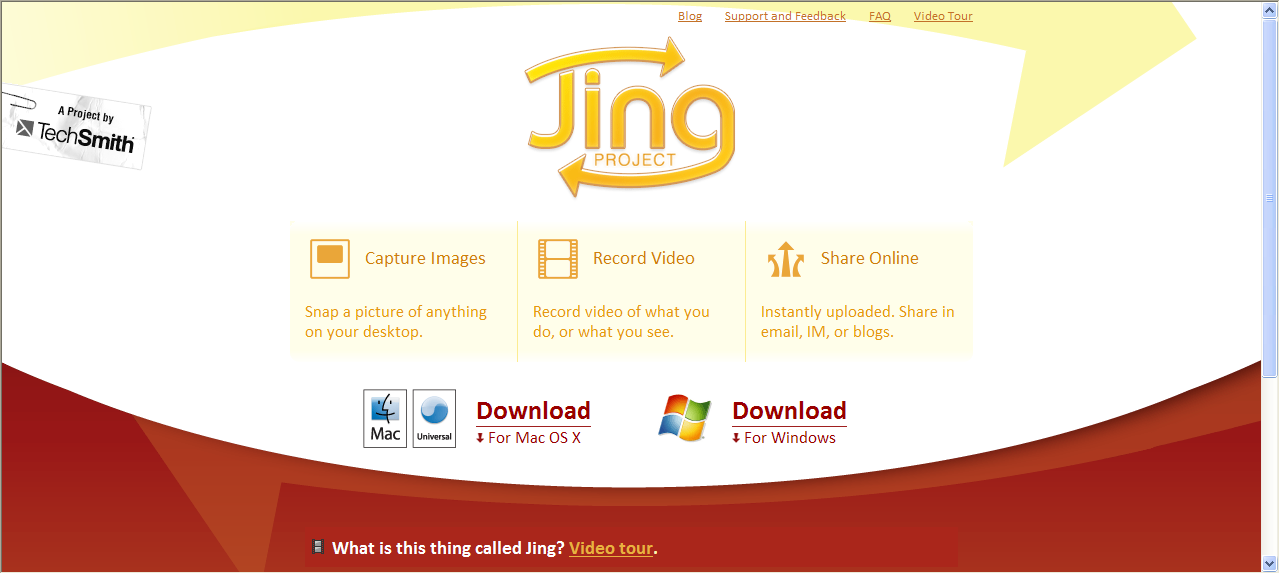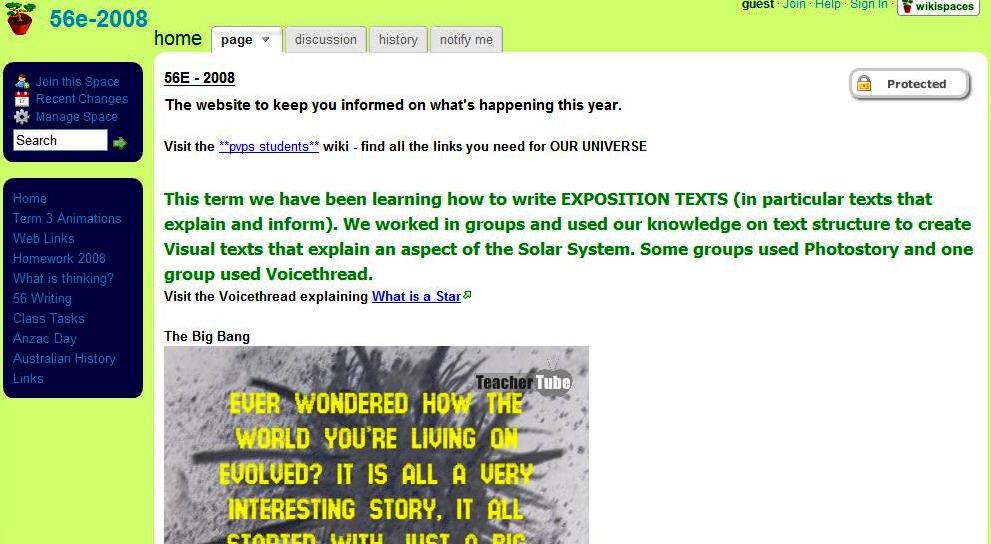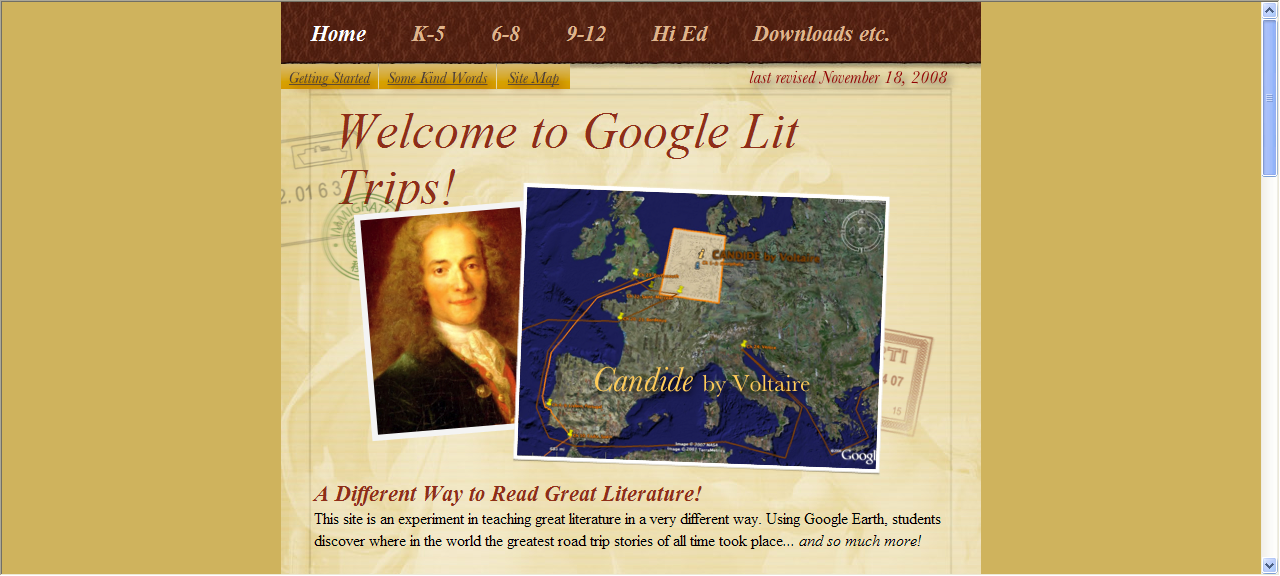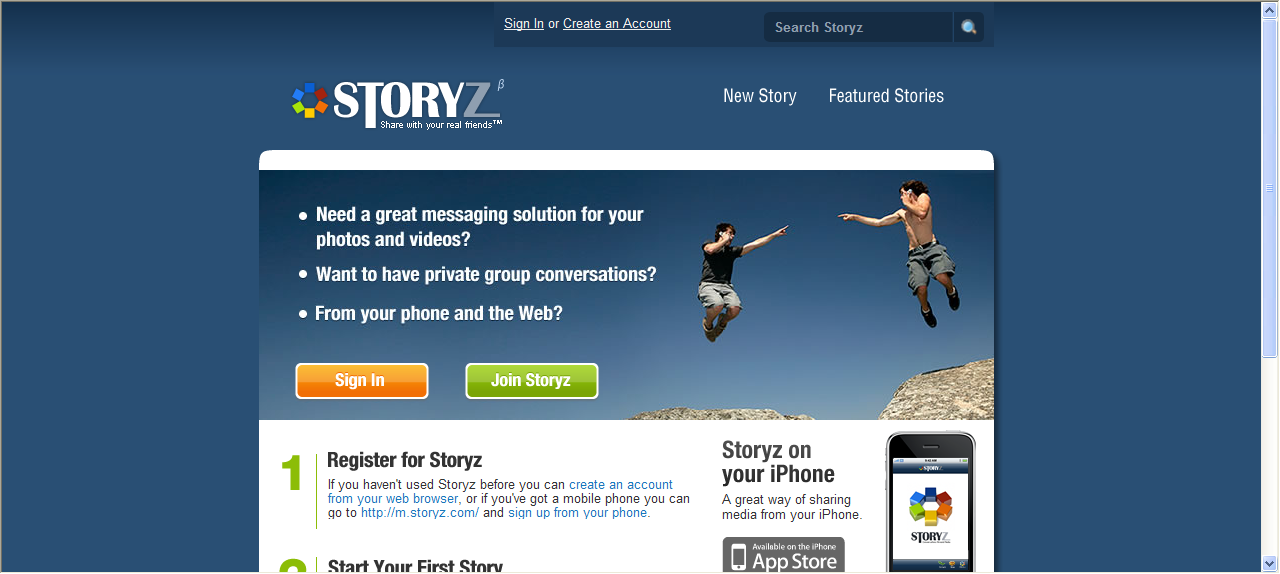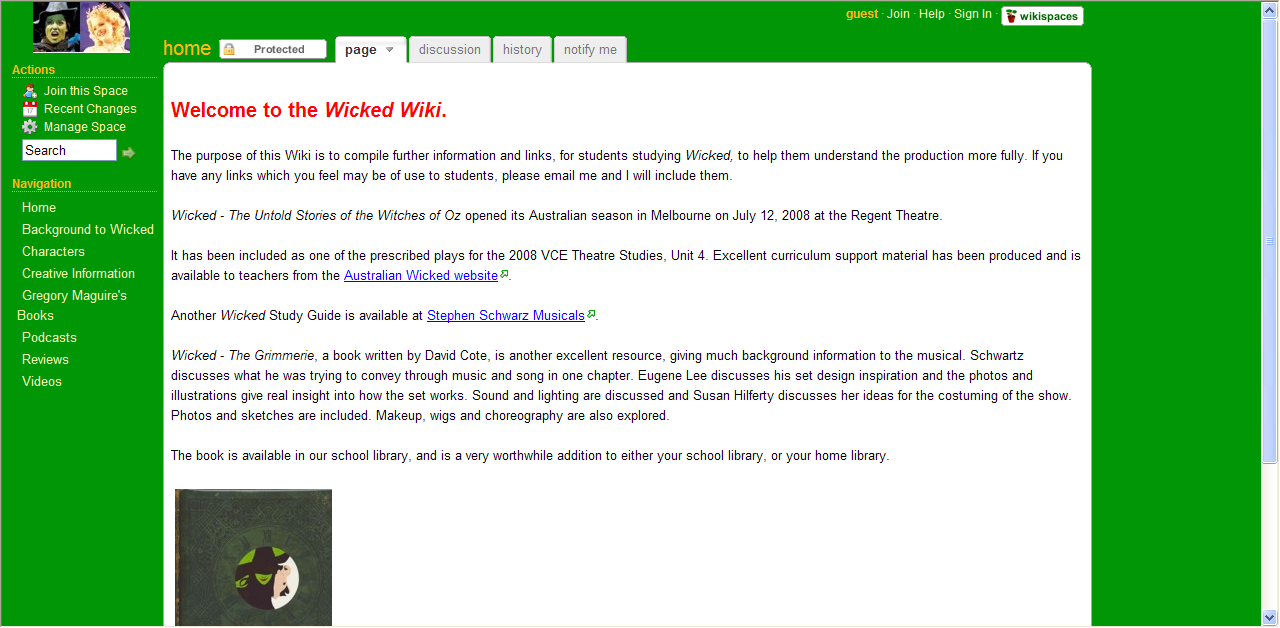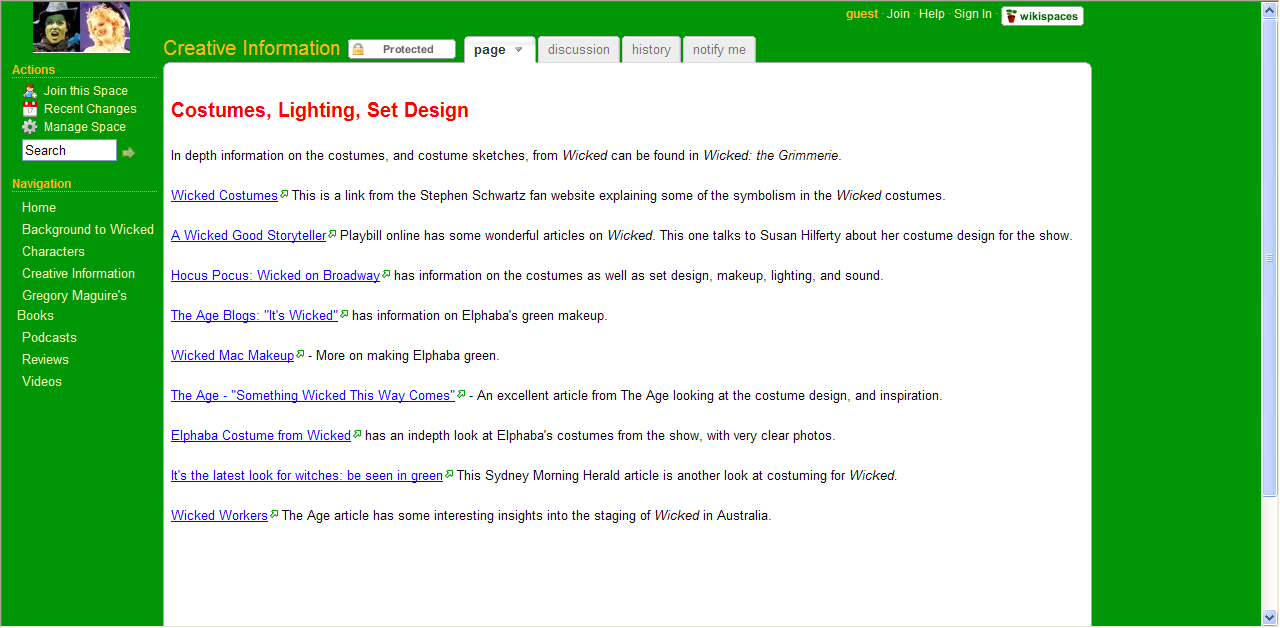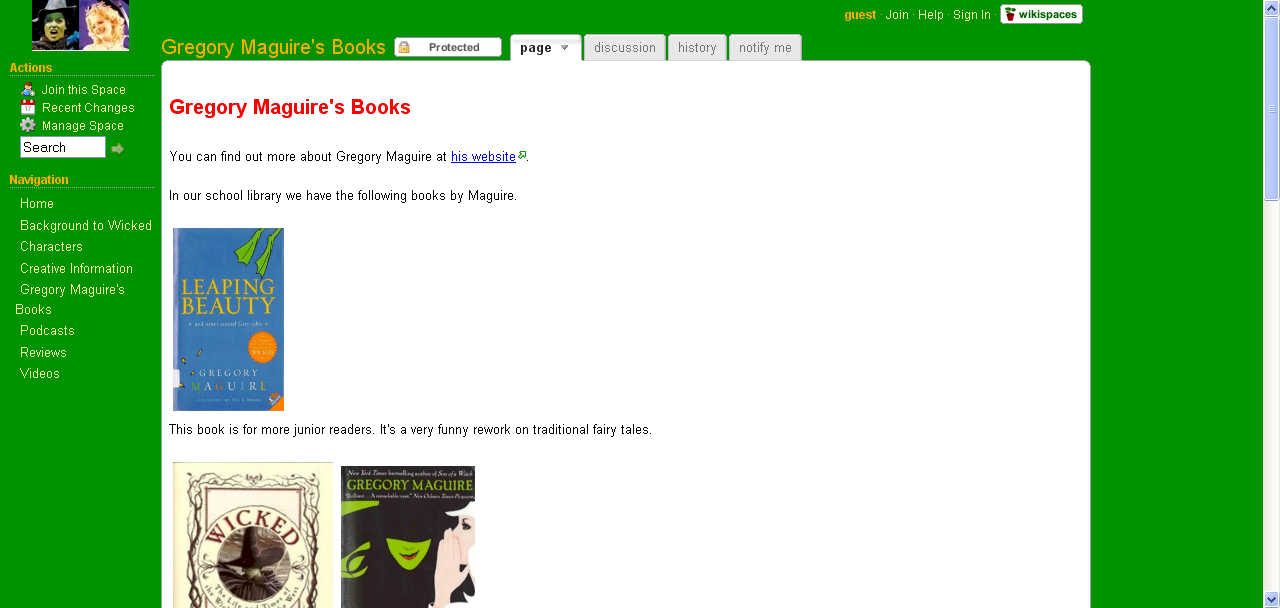Tired of your automated library system, but can’t afford to upgrade? Koha could be the solution.
Monthly Archives: November 2008
Feature wiki – Preston Girls’ Secondary College
On their arrival at Preston Girls’ Secondary College earlier this year, teacher librarians Judith Way and Reina Phung grappled to get a handle on the curriculum requirements of the college. Job-sharing the 1.0 position, with no support staff, Judith and Reina found it difficult to find the time to meet with subject coordinators to ask for their input. Aware of the few audio visual resources and a collection that needed updating, they decided to set up a ‘Curriculum Audit’ wiki.
It was decided that the wiki was to be kept private, for the use and eyes of the school staff only. Staff were emailed an introduction and request to contribute to the wiki. The email contained a word document attachment that included detailed instructions and screenshots on how to contribute to the wiki. Staff were then asked to contribute their thoughts on a number of questions:
- Do you need library resources for this topic/subject?
- What type of resources do you need? Please be explicit.
- Are you happy with the resources the library already has?
- What resources would you liked to be purchased or discovered?
- Do you have research skills embedded into the topic?
- Would you like to work with us to embed research skills into the topic?
- If you’d like help, when can we meet? Please nominate a time/date.
- How else can we help you in the teaching and learning process?
Some staff not only responded quickly and in some detail, but were enthused about the possibilities of wikis. One teacher, Les Kyle, proceeded to quickly create her own extremely detailed wiki for her VCAL class; the whole curriculum, topics and links to resources (with some contributions from Judith and Reina). This wiki was kept private within Preston Girls’ (using an email to the students’ email address inviting them to join the wiki) as full student names appeared on the wiki and discussions between teacher and students took place. Judith and Reina were proud to think that their Curriculum Audit wiki was the catalyst for Les’s fabulous wiki.
However, many staff did not know what a wiki was, and some had trouble even logging on. The ideal situation would have been an introductory session during a Curriculum Day for those interested/needing guidance. However as all Curriculum Days had been allocated to specific topics (Literacy), Judith and Reina continued to work one-to-one with interested teachers. Judith and Reina believe that something like the SLAV Web 2.0 course for teachers would be terrific, as they often felt that the majority of the teaching staff would benefit from the introduction to the Web 2.0 tools out there that can enhance teaching and learning.
The idea that wikis were the ideal tool for student/student and student/teacher (and teacher/teacher) collaboration was introduced to teachers. That students projects could be completed in teams, and the teacher automatically alerted by email to when contributions had been added. Students taking full responsibility for their own learning becomes apparent when those with access to the wiki can see (and also have email alerts) who has contributed what to the wiki. The way discussions and comments are structured means that students have to think about their responses, rather than perhaps plagiarise by cutting and pasting.
The bonus was that discussions about wikis and blogs now regularly take place and teachers who have not yet made a contribution to the wiki promise to do so when the VCE classes finish. The new ICT Coordinator has begun his own blog. And the teachers who contributed to the wiki will have the best resourced subjects in the school!
The only problem that Judith and Reina found was that the initial wiki grew so large that it had to be split into two; years 7-10 and years 11-12.
Mixbook
Mixbook allows you to import photos from your computer, Flickr, Picassa, Facebook, Yahoo! Search, PhotoBucket and SmugMug. You can also collaborate online with a friend to decide on picture selection and layout. As per many other Web 2.0 technologies, you can decide whether your book is open to everyone, just to friends or only you. Have a look at one public example below (it can be a little slow to load):
Although shipping (from the U.S) is not cheap, if you want to produce a professional looking bound book of your holiday memories, Mixbook is well worth investigating. However, you do not have to have your book printed. Mixbook hosts online photobooks for free. Again, the book can be open to everyone, friends, or just you.
There could be many and varied educational applications for a Mixbook photobook and students would really love to see their work published in a bound book. The coming break could be an ideal time to put together your own personal photobook. If you do get time to complete a photobook, we would love a comments on your thoughts.
VoiceThread
In a previous post about Pascoe Vale Primary School students creating e-books, teacher Margo Edgar mentioned getting students to create their e-books using PhotoStory or VoiceThread.
VoiceThread is an excellent Web 2.0 resource that enables users to create text, add videos and images and then record an audio overlay. Microphones and phones can be used to record audio. Users can comment on other people’s VoiceThread uploads, so there can be collaboration with other students and teachers if you wish.
VoiceThread is such an amazing and powerful tool, it is probably better to experience it for yourself, so have a look at this screencast that shows exactly how VoiceThread works: VoiceThread screencast.
There is also an excellent wiki that shows examples of VoiceThread projects in classrooms and school libraries. So creating digital storytelling and e-books is now much easier, both for students and teachers. Students should find e-books lots of fun to produce and share using VoiceThread!
VoiceThread could also be used for online professional development or online learning. Staff meetings or staff PD could be presented using VoiceThread and then saved for later access for people who were absent, or who want to revisit the presentation.
Some lessons could be uploaded to VoiceThread for students who are ill or absent and for sharing with other classes or schools. Distance education could take advantage of VoiceThread’s free accounts as well. Thanks to Margo Edgar at Pascoe Vale Primary School for the introduction to VoiceThread.
Jing Project
Jing Project is a screencasting tool. What does that mean? Jing Project allows users to record output from their computer screen. So whether it’s a static screenshot or a video recording demonstrating how to use a program, Jing allows users to record, save and then share images. Captures can be annotated with arrows, text and highlighting before saving. Images and recordings can then be saved to computer, Flickr or embedded into URLs.
When you sign up to Jing, the screencasting icons are loaded onto your computer and users are able to see and access them at all times for ease of use. The icons are placed at the top of the screen and are fairly unobtrusive.
Jing’s blog gives more information about capabilities and how to use the tool. Here is a video that shows how Jing can be used.
Feature wiki – Pascoe Vale Primary School
Margo Edgar of Pascoe Vale Primary School has worked on creating e-books with year five and year six this term. The project was to create photo stories of the solar system, which are now accessible through Margo’s wiki.
Margo explains the process the students went through. ‘The students were given the following instructions:
- Your task is to collaborate with your group to create a presentation that communicates your understanding and explains a process that happens in our Solar System, or the answer to a question about our Solar System.
- They could be created using Photostory (free download from Microsoft), Voicethread or other options as negotiated. (All but one group chose to use Photostory).
‘Presentations had to include:
- Drawings and/or diagrams
- Drawings needed to sequentially show the process that was being explained
‘Written text that follows an explanation text structure (this had been taught previously). They were expected to include an introduction, body sections that followed a logical sequence and explained step by step and a conclusion.’
Margo continues, ‘The students were expected to research their chosen topic (process/question) and then used Inspiration to flow chart the plan for their text (this was following on from previous work we had completed on planning and writing texts).
‘Once they completed their drawings the students scanned or photographed them, then imported them into the groups chosen program and added their text to create the final product. Each group was given the task of evaluating another group’s completed product and reporting back to the class on their evaluation.’ All presentations were then uploaded to TeacherTube for sharing with the wider world.
‘Whilst I have not specifically completed the SLAV Web 2.0 course – I have trained myself in the use of a lot of Web 2.0 tools over the last few years and explored ways to use them in the classroom.’
Thank you to Margo for not only sharing her success with using Photostory and TeacherTube, but for sharing her wiki as well. From the finished products, it is evident that students found the task engaging. Well done Margo.
Google Lit Trips
Google Lit Trips is a fun Web 2.0 tool where students can make a map of journeys taken by characters in a novel.
Using Google Earth to create the maps, students can then upload their own map to share with others. There are a range of ‘lit trips’ already available to view, however, Google Earth must be downloaded onto your computer to view them successfully. The site has a range of tips on how to ‘build better lit trips’ and how to integrate them into the curriculum.
Google Lit Trips could be a great tool for English classes and bookclubs, with lit trips currently available from lower primary to upper secondary and beyond. Two YouTube videos show exactly how to use Google Lit Trips:
Storyz
Storyz is a Web 2.0 tool that enables users to create and share their own stories. The fun part is that you can add text, images and video and invite friends (or colleagues or in the case of students, class mates) to view and even add to your story. Students could use Storyz to create their own e-book.
Your stories can be kept totally private, or shared with whoever you wish. Once shared with specific people, your story can be added to. This could be an interesting way to write a class story, or for students to collaborate with each other. Storyz can be accessed online or through mobile phones.
Storyz could be a great tool for developing writers to upload their multimedia stories and seek feedback from selected sources.
Feature wiki – Whitefriars College, Donvale
Whitefriars College teacher librarian Karen Kearney has developed a wicked wiki for VCE classes! Karen outlines the development of the resource; ‘The Theatre Studies boys at our school have been studying Wicked – The Untold Story of the Witches of Oz as part of their curriculum. It’s one of the plays on our VCE list.’
Karen explains how the wiki came about. ‘Earlier this year I attended the SLAV Conference featuring Will Richardson. Closely following this, all of Whitefriars College Library Staff, along with another staff member, completed the SLAV Web 2.0 “23 Things” course. These PD activities gave me many ideas of different and exciting ways in which information could be presented. Having already started blogging, I decided to try my hand at a Wiki.
‘Wikis have been used in the past at Whitefriars College. We have been a laptop computer school for many years now, and have a great intranet. Wikis for classroom use have been developed as part of the intranet, but I wanted something on the internet which many people could share.’
Karen continues, ‘Setting up a wiki really couldn’t have been simpler. Wikispaces was suggested as a good location for an educational Wiki. Following my first effort I found myself with a nice Wiki, complete with advertisements all down the side! After discussion with a colleague, I discovered that Wikispaces offer a place where teachers can create a Wiki without fees, and without advertising, for educational purposes.’
Karen says, ‘I have long had an interest in musical theatre, and was delighted to hear from our Theatre Studies boys that they were going to study Wicked – The Untold Stories of the Witches of Oz, as part of their VCE curriculum. I have seen the show on Broadway, and our Australian production, so knew it well. Furthermore, technical aspects of theatre fascinate me so I set out to find many articles on the Internet which take a back stage look at the show. I came up with many relevant articles, interviews, reviews, podcasts and YouTube videos, all of which discuss different aspects of the show. This information supports, and extends, that already provided by the Theatre Studies teacher.
‘The Teacher Librarian in me wanted to bring a reading perspective to the Wiki, and so I added a page about Gregory Maguire, the author of the book Wicked. Several of his books are listed there, as is his web site. Perhaps this might encourage some of our students to explore his other work.‘
Finally, when the Wiki was near completion, Karen sent the link to the Theatre Studies class, their teacher, and other students and teachers she thought would be interested. She then sent an email to the OZTL_Net Teacher Librarians list, asking that anyone who wished to share the link should do so with their students and teachers. Karen does warn potential users that ‘YouTube video links have been included and I’m aware that not all schools will be able to view those.’
Thanks to Karen for sharing her valuable resource with us! Well done Karen.
Another look at Flickr
Most of you have probably checked out Flickr, the photo sharing website that has thousands of photo uploads per minute.
Some school libraries, like Sacred Heart College, Geelong have Flickr accounts (as featured in our photo gallery).
Having a school Flickr account to document and publicise events, displays, speakers and renovations is a great idea. Not only can you show propespective parents what a wonderful library and library staff you have, but you can share images with library staff around the world. Sharing ideas, concepts and ways of doing things has always been the strength of libraries and Flickr gives us a chance to extend that.
Have a look at some Australian school libraries featured on Flickr. A search for ‘school library’ returns almost 30,000 photos. As long as school administration is agreeable to a Flickr account and that students’ faces are not featured, a library Flickr account is a great way to share your library with the world.

